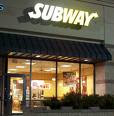Last week I blogged about how the Center for Public Interest (CSPI) is threatening a lawsuit against McDonald’s for using toys to promote Happy Meals to kids. Since then, McDonald’s has responded, sort of. In a letter apparently fed to the press even before CSPI got to see it, McDonald’s CEO Jim Skinner attempts to “set the record straight:”
We have a long history of working with responsible NGOs who are interested in serious dialogue and meaningful engagement; and we are open to constructive feedback.
Really? Like how McDonald’s worked with those two activists in the UK by suing them for libel in the 1990s for putting out a simple brochure? The case (dubbed McLibel) spawned a book and a movie and became notorious for being the longest English trial ever, not to mention the stupidest public relations move short of New Coke.
Skinner continues to dig his own grave:
Ronald McDonald also serves as an ambassador for children’s well-being, promoting messages around physical activity and living a balanced, active lifestyle.
Right. That must explain why an entire campaign was launched in March by Corporate Accountability International to Retire Ronald based on an investigation that showed how the clown’s main job is to promote McDonald’s unhealthy foods, in schools and just about anywhere children can be found.
And finally, Skinner asserts the company has “more choice and variety than ever before” in Happy Meals, and:
Furthermore, McDonald’s makes available in-depth, comprehensive nutrition information about our food to give parents the support they need to make appropriate choices for their children.
OK, now this is kind of true, and is where things get interesting. It appears that McDonald’s has already changed the nutrition facts on its website for Happy Meals. But only some Happy Meals, the ones that come with “Apple Dippers,” the healthy alternative to French fries.
In its June 22 press release about the potential lawsuit, CSPI complained that:
Of the 24 possible Happy Meal combinations that McDonald’s describes on its website, all exceed 430 calories (430 is one-third of the 1,300- calorie recommended daily intake for children 4 to 8 years old).
In documents provided by CSPI, here is what the nutrition listing looked like on the McDonald’s website as of June 15. If you compare these figures to this listing, which says is effective as of June 25, just 3 days after CSPI’s news release about the lawsuit, you will see for each of the Happy Meals that come with Apple Dippers, the number of calories has been reduced by exactly 70.
Could that be because McDonald’s has decided not to include the caramel dipping sauce in the total? Who knows? Any clever nutritionists out there want to help?
Not that this re-do really helps McDonald’s all that much, given that it only makes three of the 12 Happy Meal combinations with Apple Dippers below the 430 calorie level that CSPI says should be the cut-off. (And of course, all the others are still way over 430.) Never mind, CEO Jim Skinner has a retort to CSPI on that too:
On this point, it seems that you purposefully skewed your evaluation of our Happy Meals by putting them in the context of a highly conservative 1,300 calorie per day requirement. I’m sure you know this category generally applies to the youngest and most sedentary children.
The youngest? Ages 4-8 seems to fit squarely into McDonald’s Happy Meal demographic. The most sedentary? So now McDonald’s is saying as long as kids hop on the treadmill, Happy Meals full of chicken nuggets, fries, and soda is A-OK? You won’t find a health professional (not on Big Food’s payroll) to go along with that idea.
Also, as CSPI also pointed out, in 2007, McDonald’s pledged not to advertise to children meals that have more than 600 calories, and even with the revised calorie listings, 4 of the 24 combinations are still in violation of that pledge. Whatever the calories, it appears McDonald’s is headed to court. Here is Steve Gardner, CSPI’s litigation director, in response to the McDonald’s letter:
We’re encouraged to read that McDonald’s is signaling a willingness to make changes that are in the best interests of its customers. We hope that McDonald’s takes us up on our offer to negotiate an end to the practice of using toys to market unhealthful foods directly to children. If it doesn’t, that will all but guarantee that we will have to resort to litigation.
Stay tuned.
Update: Reporter Melanie Warner called McDonald’s to get an explanation for the calorie change. A spokesperson claimed they were just correcting a mistake. You can read her take at BNET.


















